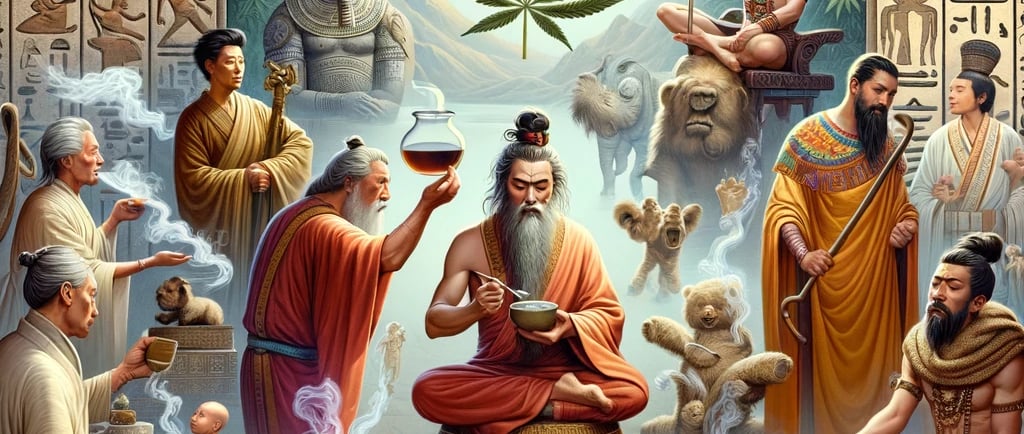The Role of Cannabis in Ancient Rituals and Medicine
Cannabis has been intertwined with human culture and medicine for thousands of years, far beyond its contemporary recreational and medicinal uses. This article delves into the ancient world, where cannabis was not just a plant but a cornerstone of rituals, healing practices, and daily life across various civilizations.
CANNABIS GUIDE
2/10/20242 min read


Historical Significance
The use of cannabis in ancient rituals and medicine can be traced back to several early civilizations, including the Chinese, Egyptians, Indians, and Scythians. In these cultures, cannabis was revered for its healing properties and its ability to facilitate communication with the divine.
China: As early as 2737 BC, Emperor Shen Nong reportedly recommended cannabis tea for various ailments, including gout, rheumatism, and malaria.
Egypt: Cannabis was used in Egypt for its medicinal properties, with evidence suggesting it was utilized in treating eye problems and inflammation.
India: In Hindu texts, cannabis is one of five sacred plants. It was used in religious rituals to honor Shiva and as a medicine for anxiety and other ailments.
Scythians: Herodotus, a Greek historian, wrote about the Scythians' ritualistic use of cannabis smoke to induce states of trance and divination.
Cannabis in Rituals
In many ancient societies, cannabis was a key component of religious and spiritual rituals. It was believed to facilitate communication with the spiritual realm, allowing priests, shamans, and laypeople to achieve altered states of consciousness, connect with deities, or embark on spiritual journeys.
Spiritual Cleansing: Cannabis smoke was often used in purification rituals, believed to cleanse the body and the environment of evil spirits.
Divination: Many cultures used cannabis as a means to predict the future or gain insights into pressing questions.
Communication with the Divine: The psychoactive properties of cannabis were harnessed in ceremonies designed to bridge the human and divine, enabling visions and messages from gods.
Medicinal Uses
The ancients recognized cannabis for its therapeutic properties, incorporating it into their medical practices. It was used in various forms, including as an ingredient in potions, ointments, and teas.
Pain Relief: Cannabis was commonly prescribed for pain, including headaches, childbirth, and injuries.
Mental Health: Conditions such as anxiety and insomnia were treated with cannabis, exploiting its calming effects.
Surgery: There is evidence to suggest cannabis was used as an anesthetic in surgeries by ancient physicians.
Cultural Integration
Cannabis's role in ancient society extended beyond rituals and medicine. It was a part of daily life, used in clothing, food, and as a trade commodity. This integration underscores the plant's versatility and its importance in early cultures.
Conclusion
The historical use of cannabis in ancient rituals and medicine provides a rich tapestry of its significance to human society. It was not merely a plant but a powerful tool for healing, spiritual exploration, and cultural practices. Rediscovering and appreciating these ancient uses offers a broader perspective on the contemporary debate surrounding cannabis, reminding us of its deep roots in human history.
